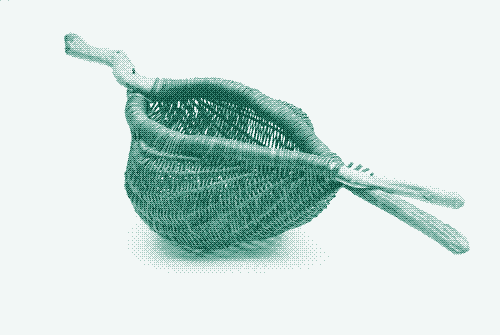
Baskets have been replaced by plastic and other kinds of factory-made containers in almost every area of life, appearing today mainly as twee Easter decorations. Making them has become synonymous with wasting time – “basket-weaving” in the USA is slang for an easy lesson for slow students.
The craft of basketry, however, might be one of our species’ most important and diverse technologies, creating homes, boats, animal traps, armour, tools, cages, hats, chariots, weirs, beehives, shelters and furniture, as well as all manner of containers.
Basket weaving makes use of fast-growing biodegradable materials—branches, twigs or shoots – that requires the forest to be cultivated rather than cleared. Basketry allows almost anyone, with little or no money and few tools, to create a large variety of useful goods in a way that is one hundred percent sustainable.
We tend to think of technology as rock and metal – from the Stone Age to the Iron Age, from pyramids and statues to Viking swords and pirate cannons. We think of the things that survive to be placed in museums, in other words, and tend to neglect the early and important inventions that ordinary people used every day but whose materials did not survive centuries of exposure.
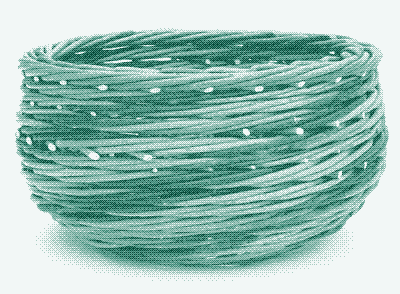
29,000 years of history
Virtually all human cultures have made baskets, and have apparently done so since we co-existed with ground sloths and sabre-toothed cats; for tens of thousands of years humans may have slept in basket-frame huts, kept predators out with basket fences, and caught fish in basket traps gathered while paddling along a river in a basket-frame boat. They might have carried their babies in basket papooses and gone to their graves in basket coffins.
Some of the first agriculture might have been to grow basketry crops, > not food crops
The earliest piece of ancient basketry we have comes from 13,000 years ago, but impressions on ceramics from Central Europe indicate woven fibres—textiles or baskets –- up to 29,000 years ago. 1 We have clues that the technology might be far older than that; in theory, Neanderthals or some early hominid could have woven baskets.
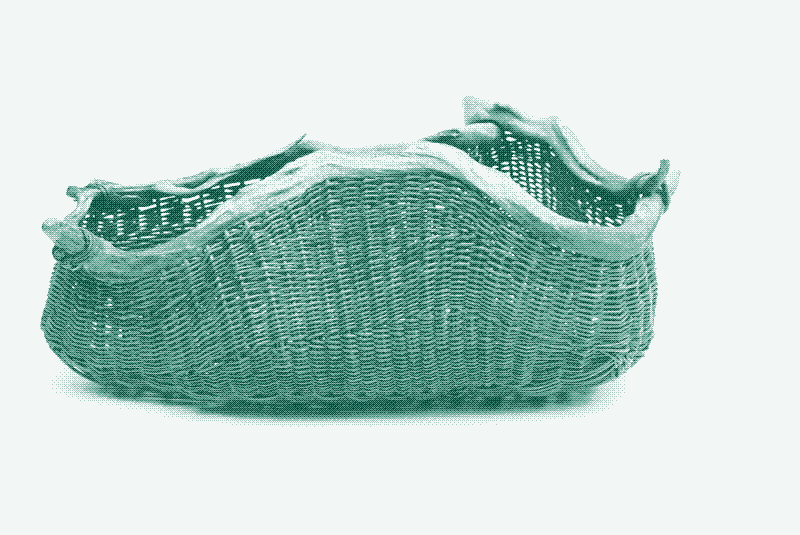
“The technology of basketry was central to daily living in every aboriginal society,” wrote ecologist Neil Sugihara, and baskets “were the single most essential possession in every family”. 2 Early humans must have regularly cropped basketry plants as they would edible plants, and burned woodlands to encourage their growth, according to anthropologist M. K. Anderson. Anderson even proposes that some of the first agriculture might have been to grow basketry crops, not food crops. 3
Main basket types
Baskets come in several main types. Coiled baskets appeared early, created by winding flexible plant fibres from a centre outward in a spiral and then sewing the structure together. Their spiral nature, however, limits them to circular objects; beehive containers, called skeps, were built this way for hundreds of years, and straw hats still are today.
The earliest American baskets were twined; fibre was wound around a row of rigid elements like sticks – wrapped around one, twisted, wrapped around the next one and twisted again. The sticks would seem to limit this approach to flat surfaces like mats, but bending and shaping the sticks allows twining to create a variety of containers and shapes.
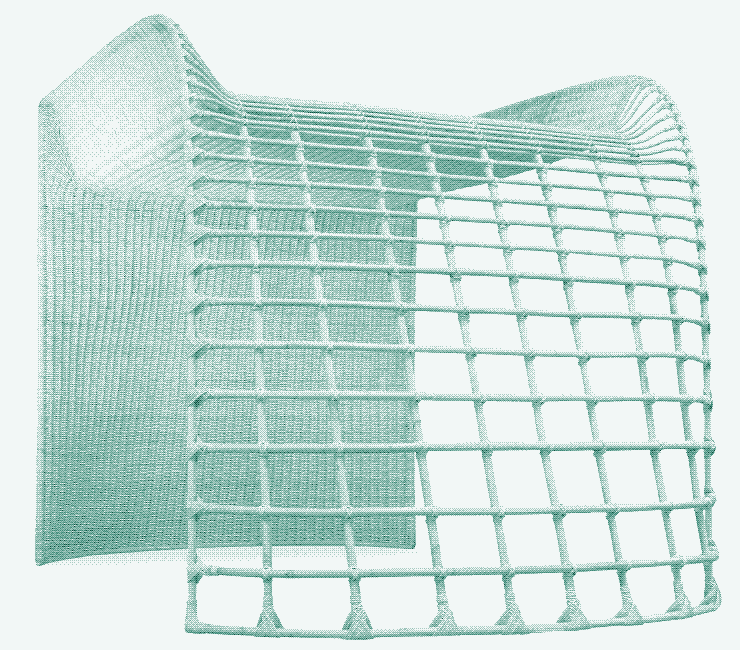
Still others were plaited, with flexible materials criss-crossed like threads through cloth. The Irish flattened and plaited bulrushes for hundreds of years into mats and curtains. Here too, the approach would seem to limit plaiting to flat surfaces, but as the rushes must be woven while green and flexible and harden as they dry, they can be plaited around a mould to create boxes, bags or many other shapes.
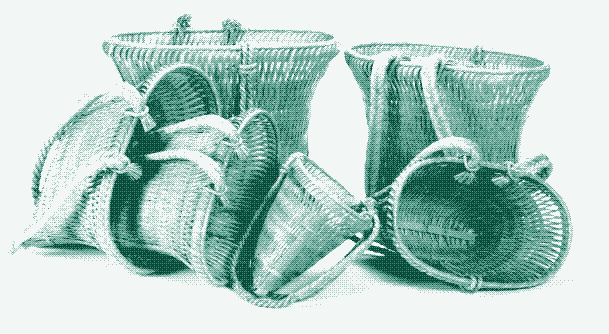
Wicker, however, probably remains the most versatile technique, weaving flexible but sturdy material like tree shoots around upright sticks that provide support. Wicker is the form used for fences, walls, furniture, animal traps and many other advanced shapes, and when you picture a basket, you’re probably picturing wicker too. 4
Hurdle fences
Once early humans mastered the technique of fashioning wicker, they began using it for a variety of purposes beyond carrying and preparing food, and shelter probably came next. Wattle fences were made with a row of upright poles with flexible wood cuttings woven between them, a basket wall. Unusually, they could be made in modular, lightweight pieces a metre or two high and a metre or two across – hurdles—and then uprooted, carried to a new location, and stamped into the ground where needed.
The uprights, sometimes called zales or sails in Britain, were typically rounded at the end and placed in a wooden frame, sometimes called a gallows, to hold them in place. Then withies – slim cuttings of willow or hazel – were wound back and forth around the uprights. At the end of the hurdle the withy would be twisted for greater flexibility, wound around the last zale, and woven back in the other direction. Usually a gap would be left in the middle of the hurdle, called a twilly hole, which allowed a shepherd or farmer to carry a few hurdles as a time on his back.
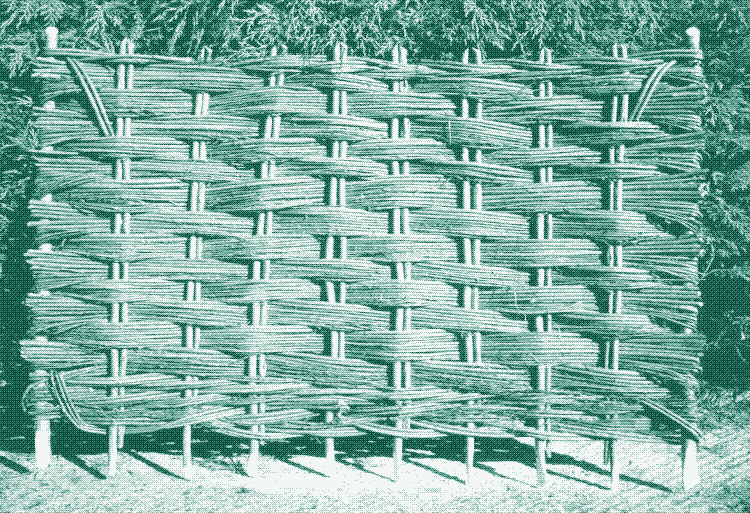
According to author Una McGovern, hurdle fences were vital to medieval agriculture; by keeping sheep confined without the need for permanent infrastructure, they allowed tenant farmers to graze sheep on a patch of land, letting them manure the fields one by one and deposit the fertilisers necessary for cereal crops. 5
Basketry buildings
The same technique could form the walls of a house, once a log or timber frame was built and the wattle filled in with a “daub” plaster for insulation and privacy. The daub often contained clay, human or animal hair and cow dung, and hardened around the wattle like concrete around rebar. The resulting structure could last for centuries, and even now restoring or demolishing old buildings sometimes reveals wattle inside the walls.
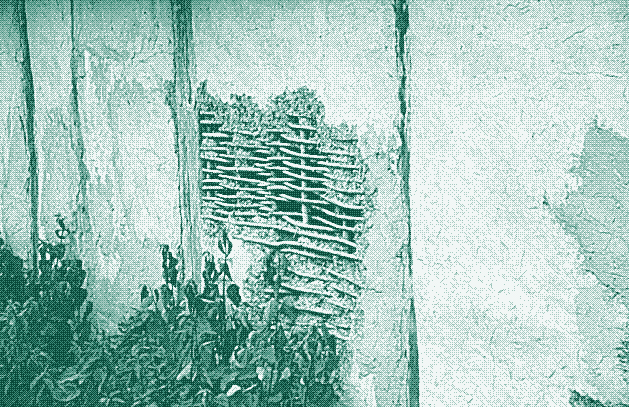
Similar techniques were used by cultures around the world, from Vikings to Chinese to Mayans. While their cheap and easily available materials made them an obviously popular and practical building method, not all builders loved it. The Roman architect Vetruvius, in the first century AD, moaned about the hazards of such cheap material in his Ten Books on Architecture:
“As for ‘wattle and daub’ I could wish that it had never been invented,” Veruvius wrote. “The more it saves in time and gains in space, the greater and the more general is the disaster that it may cause; for it is made to catch fire, like torches. It seems better, therefore, to spend on walls of burnt brick, and be at expense, than to save with ‘wattle and daub,’ and be in danger. And, in the stucco covering, too, it makes cracks from the inside by the arrangement of its studs and girts. For these swell with moisture as they are daubed, and then contract as they dry, and, by their shrinking, cause the solid stucco to split.
But since some are obliged to use it either to save time or money, or for partitions on an unsupported span, the proper method of construction is as follows. Give it a high foundation so that it may nowhere come in contact with the broken stone-work composing the floor; for if it is sunk in this, it rots in course of time, then settles and sags forward, and so breaks through the surface of the stucco covering.” 6
Woven boats
Improbable as it sounds, basketry has long been used to make boats. How long we don’t know, but humans appeared in Australia 40,000 years ago, even though it was separated from Asia even in the Ice Age. They might have built wicker boats covered in animal skins, but even if they merely tied logs together into rafts, they must have had the related technology of making fibre and tying it into knots.
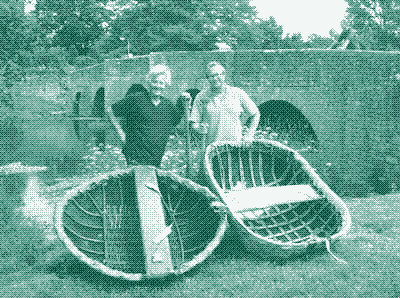
The Irish used woven boats, or coracles, for hundreds – and probably thousands—of years; they are mentioned in medieval Irish literature and are still made by aficionados today.
The coracle’s small size and lightweight construction ensured that, after the occupant had paddled across rivers, lakes or marshes, he could pick up his boat and walk across country with ease
All were woven from willow or hazel and covered with a hide – usually cow hide, but horse-hide and sealskin were also used – and supposedly waterproofed with butter. All of them were alarmingly tiny crafts in which a person sat cross-legged and sat carefully upright to avoid tipping over, like a bowl-shaped kayak. The coracle’s small size and lightweight construction ensured that, after the occupant had paddled across rivers, lakes or marshes, he could pick up his boat and walk across country with ease.
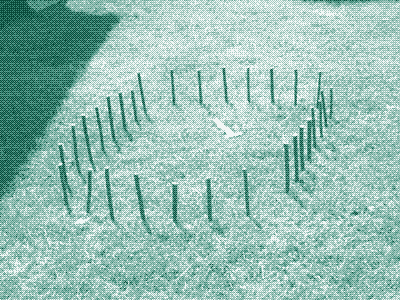
To take to the sea, the Irish wove curraghs—larger and oval-shaped to navigate across choppy waters, but still no larger than a rowboat. Documentary footage from 1937 showed men constructing a Boyne curragh; first planting hazel rods in the ground in the desired shape, and weaving a tight frame between them along the ground – what would become the gunwale, or rim, when the frame was flipped over. Then the hazel rods were twisted together to make a wicker dome, and the frame was uprooted and turned upright and a hide placed around the frame and oiled. 7
Fish traps
One common use of such craft was to set and gather fish and eel traps from rivers and lobster pots from the sea – also made, of course, from wicker. Such foods were an important source of protein, especially in Catholic countries where meat was sometimes forbidden. The traps operated on a simple principle; a bit of bait could lure an animal into the trap but, if it were shaped properly, they would be unable to escape.
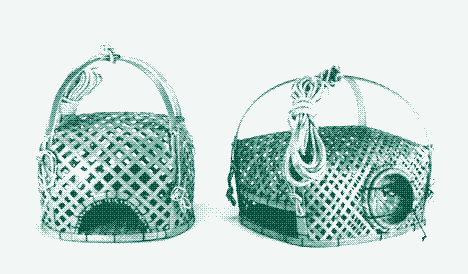
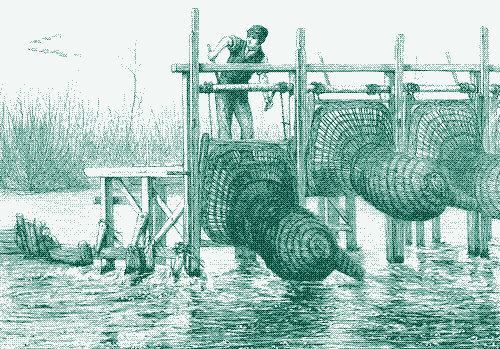
Hundreds of plant species
Baskets can be woven with any one of hundreds of plant species, depending on whatever was available. In more tropical climates people used cane or raffia, while in temperate areas like Europe a wide variety of branches and plants were available: dogwood, privet, larch, blackthorn and chestnut branches; broom, jasmine and periwinkle twigs; elm, and linden shoots; ivy, clematis, honeysuckle and rose vines; rushes and other reeds, and straw.

Perhaps the most popular, however, was willow—sallies or silver-sticks here in Ireland, osiers in Britain, vikker in Old Norse, the last of which became our word “wicker.” They are highly pliable when young or wet, lightweight and tough when dried, and grow so quickly that a new crop of branches up to three metres long can be harvested each year. As one of the earliest trees to grow back after an old tree falls and leaves a gap of sunlight in the forest, or after a forest fire razes an area, they are perhaps the tree closest to a weed in behaviour.
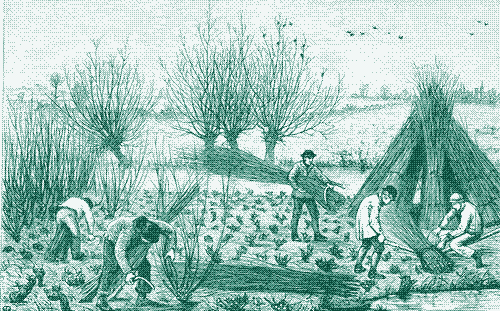
Their roots spread rapidly under the surface of the soil, making them an ideal crop to halt erosion. Their fast growth makes an excellent windbreak, the basis of most hedgerows, and makes them particularly useful in our era for sequestering carbon and combating climate change. In addition, the bark of the white willow (Salix alba) can be boiled to form acetecylic acid, or aspirin.
Cleaning the soil
In addition, the common variety Salix viminalis or “basket willow,” has been shown to be a hyper-accumulator of heavy metals. Many plants help “clean” the soil by soaking up disproportionate levels of normally toxic materials, either as a quirk of their metabolism or as a way of protecting themselves against predators by making themselves poisonous. Many plants soak up only a single toxin, others only a few; Viminalis, it turned out, soaked up a broad range, including lead, cadmium, mercury, chromium, zinc, fossil-fuel hydrocarbons, uranium, selenium, potassium ferro-cyanide and silver. 8 9 10

Many hardwood trees can be coppiced, cut through at the base, or pollarded, cut at head-height, and regrow shoots on a five-to-twenty-year time scale. Willows, however, do not need to grow to maturity, and continue to thicken at the base and grow a fresh crop of shoots each year. Basket-weavers here harvested willow as a winter ritual – ten tonnes to the acre – from fields of large century-old stumps that had never been mature trees. 11
Out of hundreds of traditional crafts, none has so many everyday applications
Once the willow is cut it could be dried with the bark on, or the bark could be stripped off. Stripping was a tedious task but it made the willow easier to quickly prepare and use, reduced the risk of decay, and it gave the willow a valued white colour. To strip the bark a large willow branch was cut partway down its length, with metal strips attached to the inside of the cut; the weaver could hold the branch between their legs and use it as we would use a wire-stripping tool to remove insulation. When cuttings were too thick to manipulate, a special tool called a cleve was used to cut them three ways down their length.
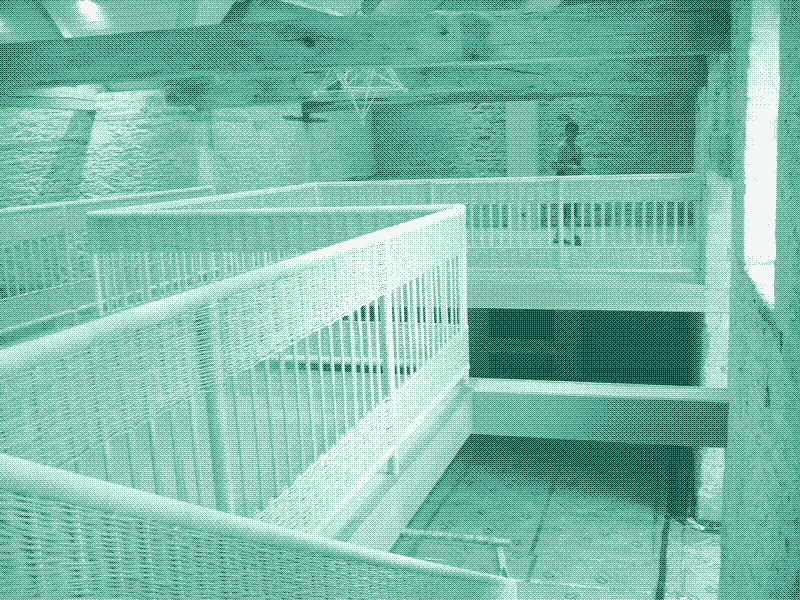

Withies were typically dried for several months and kept indefinitely before soaking again for use. Willow can be woven straight from the tree, but as it dries it loosens and the weave shifts and rattles, which is seldom desirable. To a novice, preparing the materials presents as much of a challenge as the actual weaving, as the willow must be dried but re-soaked, kept wet without rotting, and used before becoming dry and brittle again.
Everyday applications
Today a small but growing movement of people around the world tries to rediscover and re-cultivate traditional crafts and technologies. Many such techniques deserve to be revived; but some require substantial experimentation, skill, training, infrastructure or community participation. Not all low-tech solutions can be adopted casually by modern urbanites taking their first steps toward a more traditional life.
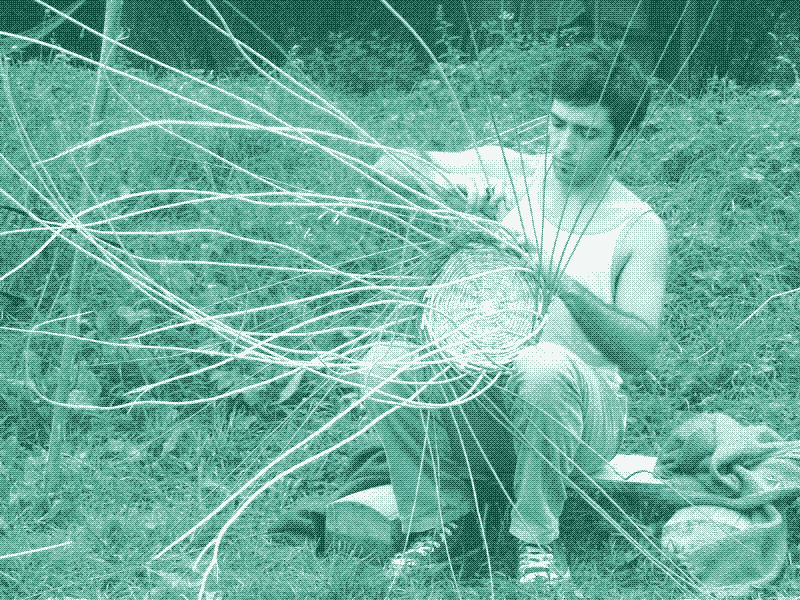
Basket-weaving, however, requires no money other than that needed for training and possibly materials. It uses crops easily found in almost every biome on Earth, and requires few if any tools. Highly skilled weavers can create works of art, but simple and practical weaves can be done by almost anyone. Out of hundreds of traditional crafts, none has so many everyday applications.
Brian Kaller
Brian Kaller is a journalist living in rural Ireland. He interviews elderly Irish about traditional ways of life, and writes a weekly column about the Long Emergency for his local newspaper. Brian blogs at Restoring Mayberry.
Reactions
To make a comment, please send an e-mail to solar (at) lowtechmagazine (dot) com. Your e-mail address is not used for other purposes, and will be deleted after the comment is published. If you don’t want your real name to be published, sign the e-mail with the name you want to appear.
Reactions
Sjarhei Karczewski
Супэр файны матэрыял! Мне заўсёды падабаліся такія рэчы, утрымліваючыя ў сабе цяплыню рук і душы чалавечай. Дзякуй / Super good stuff! I’ve always liked things like that contain the warmth of the hands and the human soul. Thank you :))
Jack S.
Wonderful piece. Some treatment of the significance of bamboo in eastern cultures as well would make it even stronger.
vanderleun
“… create a large variety of useful goods in a way that is one hundred percent sustainable.”
But not, alas, able to solve the storage needs for a globe of more than six billion humans in an affordable way.
Kris De Decker
@ #3: why not?
James W
Interesting article about baskets. In Malaysia, in some of the rural places, people still weave bamboo into “bubu” (a Malay word) to trap fish. You can see a photo here http://www.flickr.com/photos/walism/5585378844/
Here’s another photo of woven container that is still available http://jameswoo360.posterous.com/woven-basket
Also, perhaps you can update your article to include rattan furniture that are still in use today that uses rattan that’s woven together.
Tim
Great article.
I remember learning about the native tribes of Southern California when I was a student, particularly their heavy use of basketry.
They made ocean-going canoes of wicker and asphaltum, domed homes of wicker and all sorts of baskets.
The most ingenious to my mind were their summer water baskets, which they weaved to be just slightly less than water-tight, so that the baskets would “sweat” when full. They’d then hang these baskets in a shady place with free airflow. Supposedly, the water inside would become quite cool due to evaporation, and would provide a welcome draught of refreshment on a hot day.
Shorty
Updated link for the image “Traps for river crabs, made by Hiroshima Kazuro.”
http://huntingtonarchive.osu.edu/Exhibitions/basketMaker.html
Ian
Wonderful article! It’s amazing how useful these skills can be.
That said, I was disappointed that the article didn’t mention skin-on-frame boatbuilding. The native folks in the arctic sure had a rough go of it: freezing water, sea ice, and no trees. They built boats according to their needs, and developed the skin-on-frame design. Essentially, it’s a glorified basket frame covered with animal skins (canvas now), similar to the coracle mentioned in the article, but able to cope with much more intense situations. They trusted their lives to these basket-inspired boats in some of the most awful conditions on the planet. Pretty incredible.
Anyways, here are some links. Not only are they strong, flexible, and quick to build (couple of weeks!), but they’re downright beautiful boats as well. Basket technology all the way!
Theory
Durability
Photos
John
You mention in your article the coracle. I am Welsh, born in Wales. The coracle is Welsh. Ask yourself if the word coracle sounds Irish/Gaelic. It doesn’t because it is Welsh. True, the Irish also had ‘basket boats’, but the design & form of the coracle is uniquely Welsh, and centuries old. A correction with some background material would be most welcome. Otherwise articles I have seen on this site are very interesting, keep up the good work. Diolch yn fawr. (Thanks very much, in Welsh, the oldest living language in Europe)